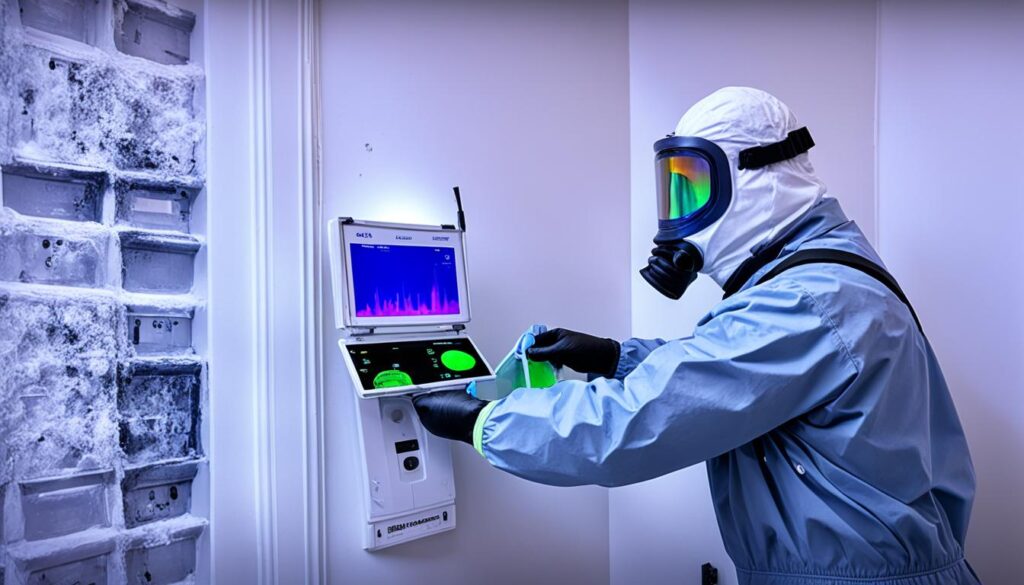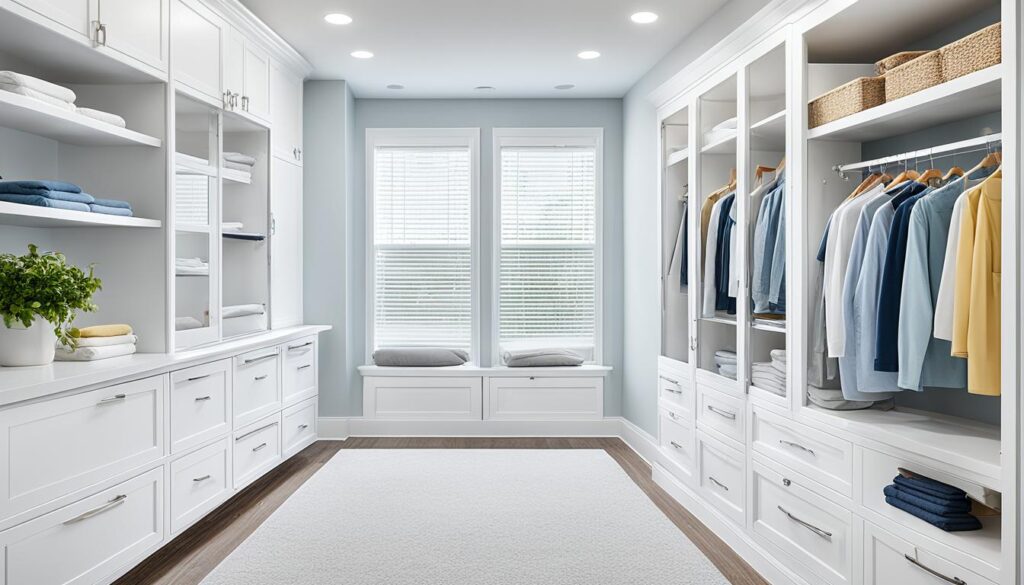
Detecting Mold in House: Signs & Solutions
Discovering mold growth in your house can be concerning, but it’s essential to address the issue promptly to maintain a healthy living environment for you and your family. This article will explore the signs of mold in a house and provide practical solutions for detection and prevention.
Mold thrives in damp and humid environments, making areas such as bathrooms, basements, and kitchens susceptible to growth. By being aware of the signs of mold, homeowners can take proactive measures to safeguard their homes.
Indoor mold detection requires careful observation and knowledge of the common indicators. Keep an eye out for:
- Foul, musty odors can be indicative of mold growth.
- Visible discoloration on walls, ceilings, or floors may be a sign of mold.
- Experiencing frequent allergic reactions or respiratory issues in your home could be a result of mold exposure.
- Condensation on windows or moisture accumulation in specific areas can create an ideal environment for mold growth.
- If you suspect mold, conduct a thorough inspection and consider professional mold testing for accurate results.
Methods for Detecting Mold in House
When it comes to detecting mold in your house, it’s essential to have a thorough understanding of the different methods available. By employing these mold detection methods, homeowners can effectively identify mold growth and determine the extent of the problem. Whether you’re conducting a visual inspection or utilizing advanced mold testing techniques, knowing how to check for mold is crucial for maintaining a healthy and safe living environment.
Visual Inspections
A visual inspection is the first step in detecting mold in your house. It involves carefully examining your home for any visible signs of mold growth. Pay close attention to areas that are prone to moisture, such as bathrooms, basements, and attics. Look for discolored patches or fuzzy growth on walls, ceilings, floors, and furniture. Additionally, check for any musty or unpleasant odors, as they can indicate the presence of hidden mold.
Mold Testing Techniques
In some cases, a visual inspection may not be sufficient to determine the full extent of a mold problem. Mold testing techniques can provide more accurate and comprehensive results. These techniques involve collecting samples from suspected areas and sending them to a laboratory for analysis. The most common mold testing methods include:
- Air Sampling: This method involves collecting air samples to measure the concentration of mold spores in the indoor environment. It can help identify hidden mold sources and assess the overall air quality in your home.
- Surface Sampling: Surface samples are collected by swabbing or tape-lifting suspected areas of mold growth. It allows for the identification of specific types of mold and helps determine the extent of contamination on surfaces.
- ERMI Testing: Environmental Relative Moldiness Index (ERMI) testing uses DNA analysis to detect and quantify different species of mold in dust samples. It provides a comprehensive assessment of the mold present in your home.
By combining visual inspections with mold testing techniques, homeowners can gain a better understanding of the mold problem in their house. This information is crucial for developing an effective mold inspection process and determining the appropriate remediation measures.

It’s important to note that while detecting mold in your house is essential, it’s equally important to seek professional help for accurate assessments and mold remediation. Professional mold remediation services, like those offered by Fix Mold Miami, can provide expert guidance and ensure the proper removal of mold from your home.
Practical Solutions for Mold Detection and Prevention
When it comes to mold, prevention is key. By taking proactive steps to detect and address mold growth in your home, you can ensure a healthier living environment for you and your family. In this section, we will discuss practical solutions for mold detection and prevention that homeowners can implement.
1. Limit Moisture Accumulation
To prevent mold growth, it’s essential to control moisture levels in your home. Here are some steps you can take:
- Fix any leaks in your plumbing system or roof that contribute to moisture buildup.
- Ensure proper drainage around your home’s foundation.
- Use dehumidifiers in damp areas such as basements and bathrooms.
- Regularly clean and dry your bathroom, including shower curtains and tiles, to prevent mold growth.
2. Improve Ventilation
Good ventilation is crucial in preventing mold. Here’s how you can improve air circulation in your home:
- Open windows and doors regularly to allow fresh air to flow through.
- Use exhaust fans in kitchens, bathrooms, and other areas prone to moisture.
- Ensure that your clothes dryer is vented to the exterior of your home.
- Consider installing an air purification system to remove mold spores from the air.
3. Address Existing Mold Issues
If you discover mold in your home, it’s important to address the problem promptly to prevent further growth and potential health issues. Here are some steps you can take:
“Mold is not something to take lightly. It can have serious implications for your health and the structural integrity of your home. Addressing mold issues promptly is crucial for a safe living environment.” – Dr. Emily Davis, Mold Detection Expert
- Isolate the affected area by closing doors and using plastic sheeting to prevent the spread of mold spores.
- Wear protective gear, including gloves and a mask, when cleaning mold-infested areas.
- Clean moldy surfaces with a mold-specific cleaner or a mixture of soap and water.
- Dry wet materials and surfaces thoroughly to prevent future mold growth.
While these steps can help homeowners detect and prevent mold, it’s important to note that professional mold assessments and remediation may be necessary for severe or recurring mold problems. Fix Mold Miami, Florida’s highest-rated mold prevention and remediation service, offers expert assistance in eliminating mold and ensuring a safe living environment for you and your loved ones.

Conclusion
In conclusion, detecting and addressing mold in your house is crucial for maintaining a healthy home environment. By learning to recognize the signs of mold growth, you can take proactive steps to prevent further damage and ensure the well-being of your family.
Throughout this article, we have explored various methods for detecting mold in a house, including visual inspections and mold testing techniques. These methods can help you identify the presence of mold and determine the extent of the problem, enabling you to take appropriate action.
It is important to remember that prevention is key when it comes to mold. By implementing practical solutions such as limiting moisture accumulation and improving ventilation, you can create an inhospitable environment for mold growth. Additionally, seeking professional assistance from experts like Fix Mold Miami can provide you with reliable mold assessments and remediation services.
Don’t let mold go undetected in your house. Take the necessary steps to protect your home and your family’s health. Contact Fix Mold Miami at [insert contact information] for professional assistance in mold assessment, prevention, and remediation.




